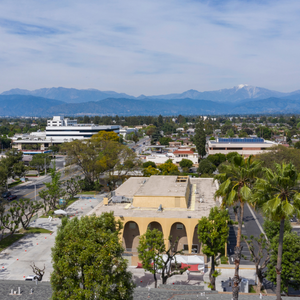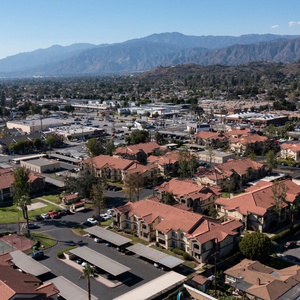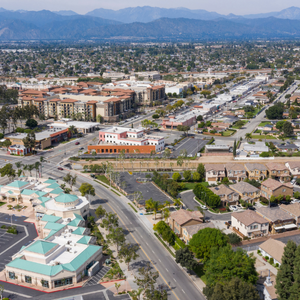
Covina lies in the San Gabriel Valley and presents suburban harmony along with urban access. This guide analyzes the living costs in Covina and captures vital costs in housing, transit, and basic living. For someone intending to relocate or even those interested in the cost of living in the community, it is important to have background costs. From the provided research guide, the user comes equipped to make a decision on how costs relate to the community. This will guarantee improved quality of life in Covina and assist those users in assessing living standards. Blue Wave Investments helps residents and newcomers alike make informed housing and financial decisions, ensuring a smoother transition and a better understanding of the city’s lifestyle expenses.
Understanding the Basics of the Covina Cost of Living
With a blend of suburbia and city life, Covina, California, is an appealing place to live. To assess the cost of living in Covina, the baseline indicators provide a starting point. Looking at housing, healthcare, and other daily living expenses, especially in comparative cities like West Covina, it becomes necessary to juxtapose these costs with the national averages. Such an understanding goes a long way in portraying Covina to prospective resident, especially in determining the value of the city in consideration of their moving and settling plans in a highly livable California city as per their affordability.
Factors Affecting the Cost of Living in Covina

Factors that define Covina, California’s cost of living include evaluating residents’ day-to-day expenses. The greatest contributor, by far, is housing. This is guided by the property size, amenities, and distance to downtown. Compared to the national averages, Covina’s housing market is moderately expensive, primarily attributable to its proximity to Los Angeles. Covina attracts individuals to the suburbs, providing them with easy access to the city. Homeowners and renters alike would find lodging priced higher or lower, based on existing housing demand and surrounding neighborhood attributes. At the same time, the state average utilities and taxes provide no relief to the residents’ association.
Aside from housing, the lack of affordable Covina distribution is greatly impacted by the costs of healthcare, transport, and other basic living essentials. California’s health expenses, for the most part, are tied to the state’s average and are justified by the presence of quality health center facilities. Commutable transport also impacts these costs. While public transit is available, most residents drive to and from work, adding to vehicle fuel, insurance, and maintenance costs. Eating, entertainment, and recreational options are also priced consistently with the deficit of affordability. Each of these amenities articulates the cost of living in Covina, caught in a state of loose trade-off and quality of life.
How Covina’s Cost Compares to Nearby Cities
In relation to the cost of living in nearby areas like West Covina, Azusa, and Glendora, Covina is quite affordable and offers a balanced quality of life. Compared to West Covina, Covina does tend to offer a lower cost to buy and rent homes, and stays lower in price than Glendora, which has more expensive and higher-end neighborhoods, making Glendora a more expensive area. This attracts families and professionals who like living in Los Angeles County but are priced out of the nearby areas. Utilities and groceries also offer a good lifestyle with a lower cost, making the lifestyle affordable.
In regard to all the amenities, Covina’s affordability is justified due to the accessibility and the amenities available. Transportation and healthcare are still at/near a regional average, and there is great public transportation and medical access, which is nice for citizens. Compared to the bigger urban areas of the San Gabriel, Covina still offers the same amenities and has managed to hold on to a small-town feel. Because of the town’s amenities and sense of community, along with being close to centers of employment, Covina has become a desirable place to live in because of the low cost and convenience offered in the southern part of California.
Exploring Covina’s Housing Market
In Covina, the cost of living and housing tend to go hand in hand. As the costs affect the economy, those who wish to rent or own homes may have to face unanticipated conflicts to achieve a satisfactory resolution, permitting the situation to improve. Covina is bordered by Los Angeles to the south, which has greatly gained the attention of the clientele. Comparing the average home costs to adjacent neighborhoods and monitoring the trends might provide a means to predict movement to the Covina real estate market. The following trends provide a comprehensive picture of the real estate market in Covina, working from the challenges of affordability to the opportunities for buyers and renters.
Current Trends in Covina Real Estate
Covina has slowly been experiencing the same uniform growth seen across Southern California’s real estate market. High demand coupled with low supply has increased the value of real estate. Its proximity to Los Angeles, which is quite dense, makes Covina a good option for people who want more space. A single-family home is the most likely sought-after property in Los Angeles, but interest in multi-family units is increasing amongst investors. The high competitiveness of the market has resulted in quick home sales, as well as buyers attempting to outbid one another. Well-maintained homes on the market even sell for more than the price listed.
The effect of remote and hybrid work models has been another significant change to Covina’s housing market. Buyers want a home with an office, a big yard, and proximity to a park, which is easily available in Covina neighborhoods. The upward price pressure is most likely due to the sustained low inventory. Families value community, responsiveness of infrastructure, and potential for property value increase to assist growth. Buyers, as well as long-term investors, are increasingly willing to take on high prices compared to lower-priced market offers. Covina has no other market comparison to meet the growth and resilience of property infrastructure. The real estate trends are a reflection of this. Its position makes it an increasingly strong candidate for those willing to invest or settle in the San Gabriel Valley region.
Average Housing Costs in Covina
Considering its unique position, not quite suburban but not inner-city Los Angeles either, Covina is well balanced. This is also reflected in the housing prices. Increased prices, within the context of prices of the entire state, are indicative of the demand of buyers. There is no doubt that buyers have been looking for good housing deals away from the large metropolitan areas. At the same time, the prices, as well as the housing offers, have been reasonably closer to Los Angeles compared to the state average. Because of this, families, working individuals, and retired individuals have been drawn to the city for its community. There is a sense of convenience to the housing offers from neighborhoods, as they are not all the same; from tiny starter houses all the way to large houses, communities, and families.
The range of prices for rentals in Covina, much as in the whole region, has also been stable. The difference in rental houses and apartments offers, in reference to all parts of the region, is also not far from the standard Southern California range. For those who are not ready to invest in a house but are looking for a suburban region that is well-connected, developed, and provides comfort, Covina is ideal. The competitive Southern California housing market provides a desirable suburb in Covina. This is true whether a rental or a purchase is in question. The amenities that Covina provides also improve the value of the housing offers.
| Key Metrics | Current Trends | Impacts | Future Projections |
|---|---|---|---|
| Median Home Price | Stable with slight increase | Increased buyer interest | Moderate growth expected |
| Inventory Levels | Low supply | Competitive market | Gradual increase |
| Buyer Demographics | Increased millennial interest | Shift in housing preferences | Continued popularity |
| Market Dynamics | High demand, low inventory | Price competitiveness | Potential stabilization |
This table provides a concise overview of how current trends in Covina’s housing market influence current dynamics and hint at future developments.
Income and Expenses in Covina
For residents and prospective movers to Covina, California, understanding incomes and expenses is pivotal to finding a budget-friendly and rewarding way of living. Covina’s economy is shaped by variances in salaries and living expenses, which have a considerable impact on household budget allocation. An analysis of Covina’s median household income provides a clearer picture of what the locals earn on average. A thorough understanding of how these incomes align with expenses is vital to appreciating how residents cope with the living costs in this active part of California. The neutral rating on affordability in Covina is a testament to the hard work put in by its residents.
Analyzing the Median Household Income in Covina

Understanding Covina’s median household income allows for the evaluation of the economic feasibility of living in this suburban city. It shows the employment opportunities in the area and also points to the economically developing trends in the region. Most of the time, the median household income obtained in Covina falls below that of most California cities, which is fair economic representation for the middle class. It allows for economically balanced living, which is attractive to the services and amenities offered in the region, to be obtained in an economically feasible manner. It shows the employment opportunities in the area and also points to the economically developing trends in the region.
Diverse stakeholders from blue-collar to white-collar professions are represented in the framework of this median household income. Within a short commuting distance to varied industries, the area also draws the economically competitive job stakeholders of the working population. For example, the local health sector, educational institutions, and retail industries provide numerous employment opportunities that sustain Covina’s economic framework.
The changes to Covina’s household income are due to the changes in the economy as a result of changes in minimum wages and wages in specific industries. These changes, along with the changes in the median, affect how much buying power people have and how expenses are managed. Lastly, examining the income distribution patterns along the lines of different social configurations, such as singles and families, helps to understand the socio-economic situation in Covina, offering a perspective on inequity and economic accessibility.
Balancing Household Income with Expenses
Residents of Covina manage a micro-economy comprised of income, household expenditures, and monthly budgets in a way that subtends the financial stresses associated with the cost of living of a typical Southern Californian suburb, which range from moderate to high. The cost of housing and the associated utility bills take the lion’s share of a family budget by a wide margin, and planning expenses down to the last dollar is the only reliable way to avoid the financial peril of having one’s housing budget blow up. Prudently assigning defaults to various categories of spending and controlling the discretionary spending helps in achieving the objective of having a net spending balance at the end of the month, available for exhaustion, be it to savings, entertainment, buffers, or slots to absorb irrational and impulsive expenditure.
Indirect expenses associated with transport and a family member’s health and health services are also very important constituents of the household budget in Covina. Households improve the health of their finances by taking up streamlined and cost-conservative budget management measures. Covina’s sustainable spending and community cohesion programs cultivate a spirit of financial mindfulness, which helps keep the community from extending its finances to a point of losing the ability to enjoy life in Covina. The balance, which is made up of the income, is enhanced by the local economy of Covina, thus giving the resident a living experience of Southern California to be proud of.
Additional Factors Influencing Affordability
Evaluating the financial viability of Covina involves examining other expenditures besides the fundamentals. Apart from the accommodation and moving expenses, the residential cost factors involve relatively soft valuations and complex integrations. These factors involve the local government’s taxation and public services, the costs of utilities, and the discretionary costs of services and goods that might be out of the budget. For the new residents, and especially the potential ones, it is important to predict other costs and expenses on rational maximization and intra-temporal substitution. There are other socio-economic and demographic characteristics rationalizing the use of some tips and tricks to improve and manage these resilient costs.
Tips for Managing Monthly Expenses in Covina

To manage monthly expenses in Covina, you have to budget a bit and do some resourceful planning, especially since housing and utilities costs can stretch a budget. Understanding how one’s income is distributed on cost of living expenses, mainly housing costs, rent, groceries, and utilities, provides a savings gn perspective on rent affordability. Individual costs can be eased by reduced housing costs and adopting energy-efficient practices that help in lowering utility costs by sharing living accommodations. Expensive utilities can be reduced by sharing living accommodations. Keeping a record of expenses and tracking budget goals by placing needs over wants helps in charging and rectifying overspending that may aid unsustainable living.
Careful planning is key to optimizing costs on transportation and health. Because most people in Covina primarily drive, fuel, vehicle insurance, and maintenance costs can be staggering, especially with no public transit utilization or empty-seat carpooling. For health, especially discretionary expenses, strategically purchasing insurance coverage, employing community clinics, and providing preventive care will reduce possible long-term expenses. Lowering expenses is also possible with the use of emergency funds. For homeowners seeking financial relief or relocation options, cash home buyers in Covina or in nearby cities can offer quick, hassle-free sales that free up funds and simplify transitions. Practical living expense management helps reduce the loss of savings on the quality of living.
Covina, California, offers a delightful mix of suburban ease and urban accessibility, making it a desirable location to live. Although the costs of living are mildly higher than the national average, the area more than makes up for it by offering great amenities, a sense of community, and proximity to Los Angeles. Relocating and investing need to be studied by looking at the costs of housing, transport, and everyday necessities in order to gauge the potential for your ideal lifestyle. For those planning to move or sell property, a company that buys homes in Chino or in nearby cities can provide a fast and convenient way to simplify the process. With reasonable planning and budget control, it is possible to live in Covina at a great standard while still being affordable. Drawing professionals and families, Covina is an appealing place to live.
FAQs
What is the cost of living like in Covina, California?
Cost of living in Covina considers several factors like housing, movement, and healthcare. Covina’s housing is a bit higher than the national average because of proximity to Los Angeles. However, transportation and healthcare affordability is in line with state values.
How does Covina’s housing market compare to nearby cities?
Covina has lower housing costs than West Covina, which makes Covina a more affordable option. Despite housing costs that are higher than the national average, Covina offers the tranquility of a suburb while still allowing quick access to your urban needs.
Are healthcare costs significant in Covina?
Healthcare costs in Covina closely reflect the rest of California. This translates to a multitude of healthcare-related amenities and services to choose from. For families and retirees, expenses of this nature ought to be considered when planning their budget for the rest of the region.
What transportation options are available in Covina?
Covina possesses a strong public transportation system along with convenient access to a network of highways. Although most people opt for a personal car, commuting by public transportation and carpooling are inexpensive alternatives.
Does household income in Covina cover living expenses comfortably?
Covina’s median household income ranks in the mid-range compared to cities in California. This allows Covina to afford a balanced lifestyle. That said, due to the high expenses, day-to-day expenses, and more importantly, housing, utilities, and transport costs, a more conservative approach is required.
Covina, CA, offers a mix of suburban comfort and city convenience. While it’s more affordable than nearby Los Angeles, housing and daily expenses are still above the national average. Understanding key costs like rent, utilities, and transportation helps residents budget wisely and enjoy a balanced lifestyle in this lively community.
Do you need to sell your home? Sell quickly, avoid costly repairs, or prefer a hassle-free sale. Blue Wave Investments is here to help. We offer fair cash offers, handle all the details, and make the process seamless. Ready to sell or have questions? Contact us at (866) 613-3041 for a no-obligation offer. Get started today!


